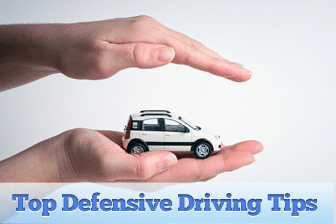The standard Safe Practices for Motor Vehicle Operations defines defensive driving skills as “driving to save lives, time, and money, in spite of the conditions around you and the actions of others.” This definition is taken from the National Safety Council’s Defensive Driving Course. It is a form of training for motor vehicle drivers that goes beyond mastery of the rules of the road and the basic mechanics of driving. Its aim is to reduce the risk of collision by anticipating dangerous situations, despite adverse conditions or the mistakes of others. This can be achieved through adherence to a variety of general guidelines, such as following the assured clear distance ahead and two second rules, as well as the practice of specific driving techniques.
So how do you become a good defensive driver? Here are a few defensive driving tips can help reduce your risk behind the wheel:
Think safety first. …
Be aware of your surroundings — pay attention. …
Do not depend on other drivers. …
Have an escape route. …
Follow the 3- to 4-second rule. …
Keep your speed down. …
Separate risks. …
Cut out distractions.
As a defensive driver, you can avoid crashes and help lower your risk behind the wheel. If you’ve been out on the roads, you know that not everyone drives well — but most people think they do. Some drivers speed aggressively. Others wander into another lane because they aren’t paying attention. Drivers may follow too closely, make sudden turns without signaling, or weave in and out of traffic.
Aggressive drivers are known road hazards, causing one third of all traffic crashes. But inattentive or distracted driving is becoming more of a problem as people “multitask” by talking on the phone, texting or checking messages, eating, or even watching TV as they drive! You can’t control the actions of other drivers. But updating your defensive driving skills can help you avoid the dangers caused by other people’s bad driving.
